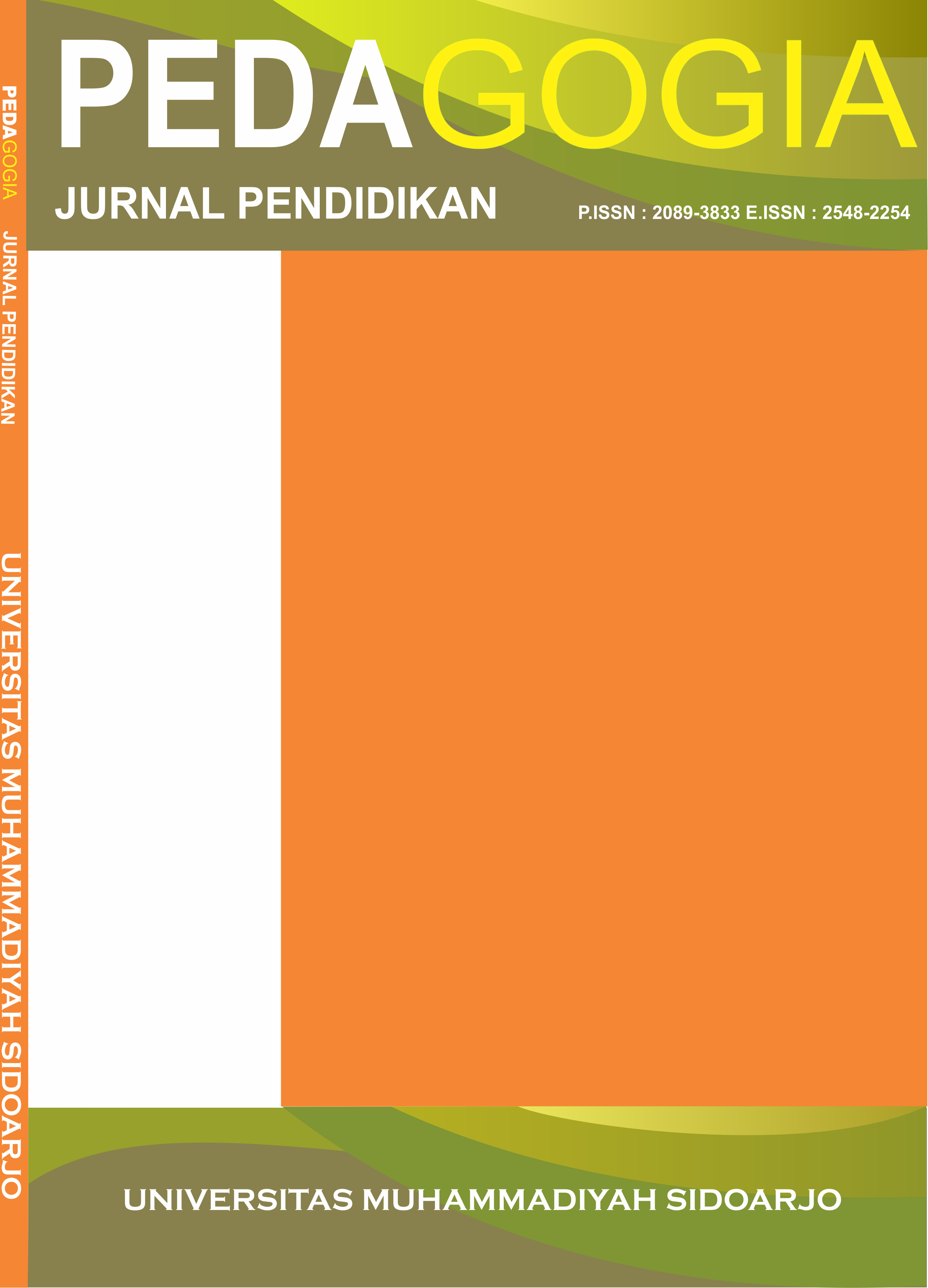The Effect of "What's Another Way Method" on Creativity Ability in Problem Solving
Pengaruh Metode “What's Another Way” terhadap Kemampuan Kreativitas dalam Pemecahan Masalah
DOI:
https://doi.org/10.21070/pedagogia.v8i1.1941Keywords:
What’s another way, Creativity, Problem solvingAbstract
Creativity is one of the necessary skills in problem solving. One method in problem problem is What other way. The study was conducted to find out information about other way about the ability and problems in the students in the field of Advanced Mathematics Education of integer material. The study involved 76 students from University in Yogyakarta. This research method is quasi experiment. Instrument of creativity problem solving of pre test and post test conducted in experiment class and control class. The results of that test include creativity in the problem that includes three indicators, fluency, flexibility, and novelty. Then, the data were analyzed by comparing the results of pre test and post test in the control and experimental class. Data analysis is also reinforced by gain score. The results of this study is being the response of students towards learning by using the "what's another way" is positiveReferences
Bennet, A. B. and J, L. (2012). Burton &L.Ted Nelson. Math- ematics for Elementary Teachers a conceptual approach (New York: Mc.Graw-Hill)
E, S. R. (2011). Psikologi Pendidikan Teori dan Praktik Krulik, S., Rudnick, and A, J. (1999). Innovative Taks to Improve Critical and Creative Thinking Skills. Dalam Stiff. In Developing Mathematical Reasoning in National Council of Theacher of Mathematics, eds. V. Lee and F. R. Curcio
Krutetskii, V. A. (1976). The Psychology of Mathematical Abil- ities in School children (Chicago: The University of Chicago Press)
LeBlanc, J. F., Proudfit, L., and Putt, I. J. (1980). Teaching in Problem Solving in the Elementary School. Dalam. In Problem Solving in School Mathematics, eds. S. Krulik and R. E. Reys (Reston, Virginia: NCTM Yearbook)
Musser, G. L., Burger, W. F., and Peterson, B. E. (2011). Math- ematics for elementary teachers a contemporary approach (Danvers: John Wiley & Son, Inc)
Polya, G. (1973). How to Solve It. Second Edition (Princeton, New Jersey: Princeton University Press)
Posamentier, A. S. and Stepelman, J. (1990). Teaching sec- ondary school mathematics (Ohio: Merril Publishing Com- pany)
Ruseffendi, H. E. T. (2005). Dasar-dasar Penelitian Pendidikan & Bidang Non-Eksakta Lainnya (Bandung: Tarsito)
Tatag, Y. E. S. and Widhia, N. (2009). Meningkatkan Kemam- puan Berpikir Kreatif Siswa melalui Pemecahan Masalah Tipe “What’s Another Way” (Yogya: Jurnal PGRI)
Warli and Yuliana, E. (2011). Peningkatan kreativitas pemec- ahan masalah metode “what’s another way” pada materi bangun datar siswa kelas VII SMP. Jurnal Formatif 1, 208–
Downloads
Published
How to Cite
Issue
Section
License
Authors retain copyright and grant the journal right of first publication with the work simultaneously licensed under a Creative Commons Attribution 4.0 International License that allows others to share the work with an acknowledgement of the work's authorship and initial publication in this journal.








